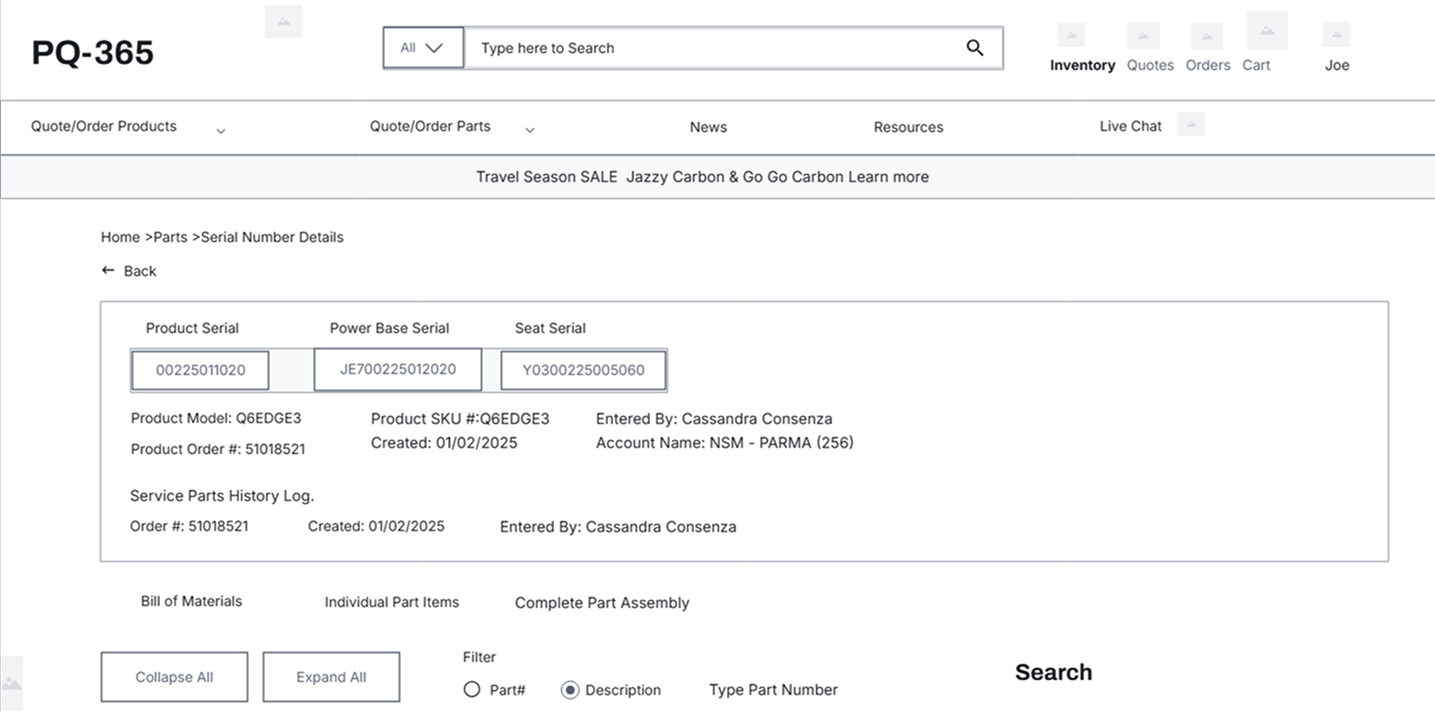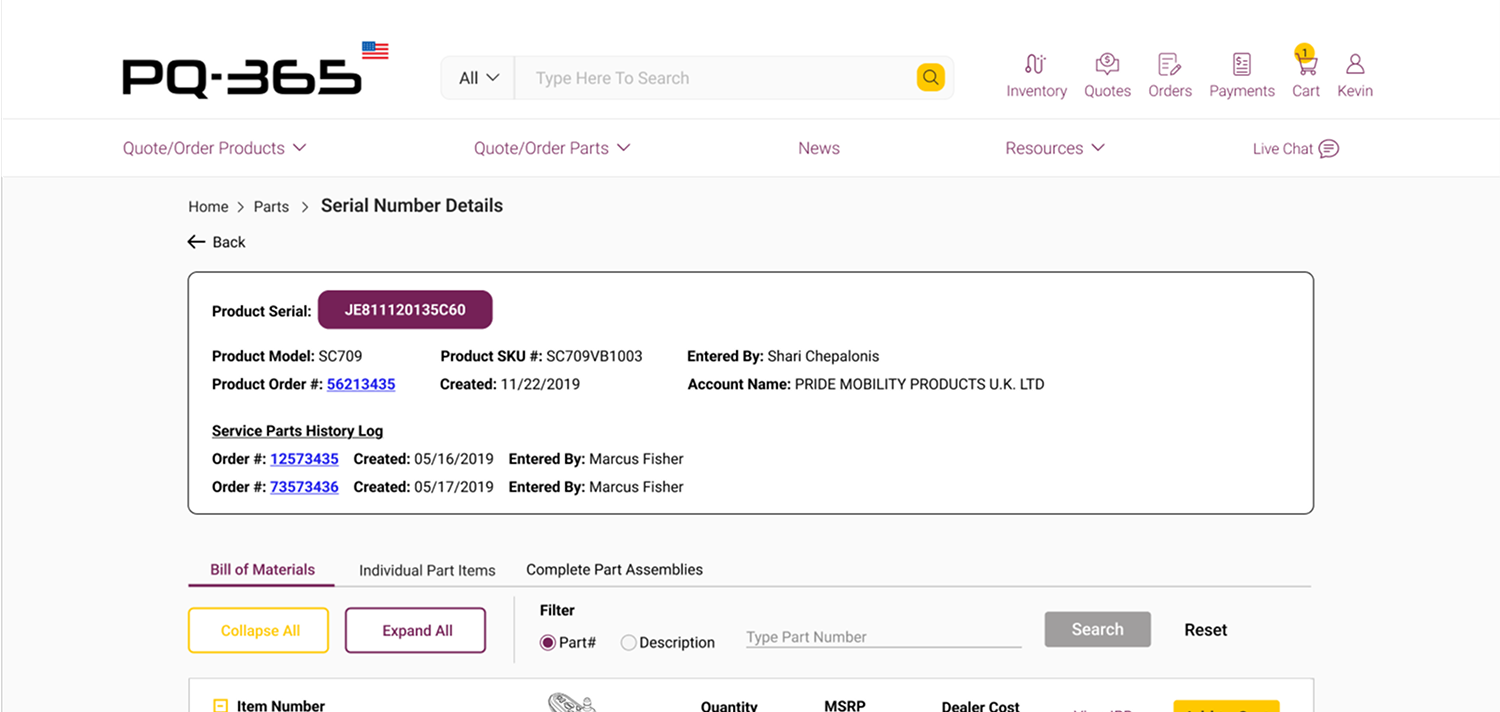3. Research
Unlike traditional UX projects where designers lead discovery, this project followed a feedback-driven iterative cycle. Pride Mobility’s internal team collected user insights through support tickets, emails, and feedback forms from providers and retailers.
These insights were distilled by the client and shared with me during design handoffs. My role was to transform these requirements and usability pain points into improved user experiences.
This feedback loop continued post-launch, where users submitted issues or suggestions that were then prioritized for future sprints.
Rather than formal interviews or usability testing sessions, this real-world feedback model ensured designs stayed closely aligned with user needs.
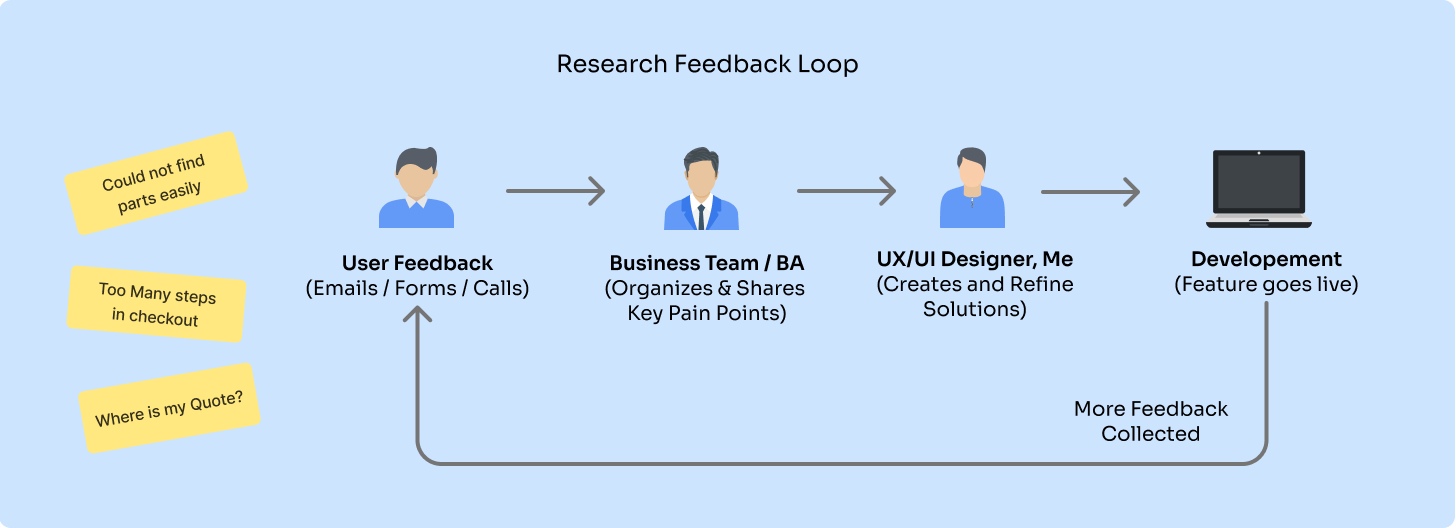
User Persona

John Martinez
45, Mobility Retail Sales Associate
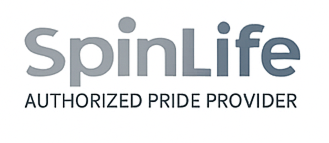
Background
John Martinez is a 42-year-old Purchasing Manager at a mid-sized DME provider. He handles high volumes of orders and quotes daily and needs a fast, reliable system to find parts, generate quotes, and manage orders efficiently—without getting bogged down by clunky navigation or manual workarounds.
Goals
- Quickly Locate parts using serial numbers
- Build and convert quotes into orders seamlessly
- Access shipping, order and compatibility details easily
Frustrations
- Frustration when serial search results in irrelevant part.
- Inefficient quote-building leading to order delays.
- Dashboard Overload - too many clicks for common tasks.
Needs
- Tree-based smart serial number search
- Quote builder with live part validation
- One-page checkout with fewer clicks.
Devices Used
Desktop, Tablet and Mobile
User Journey Map
4. Design
I focused on improving existing flows and redesigning core UI patterns like part lookup, quote builder, and checkout — ensuring they supported real-world workflows more intuitively.
Design Objectives
Based on recurring usability issues, I set out to design a system that was:
- • Task-efficient – minimize steps to complete key actions
- • Validation-friendly – enable accurate, in-context part validation
- • Scalable – modular UX supporting future features
- • Role-aware – accommodate both providers and retailers
- • Visually simplified – reduce UI clutter and enhance clarity
Enable serial-based & part tree search
Introduce modular Quote Builder
Add inline compatibility checks
Use one-page checkout with fewer steps
Modular patterns to support future features
Cater to both retailers and providers
UI Workflow Enhancements
Rather than redefining the full site architecture, I worked within the existing structure and focused on improving key interaction zones. This included:
- • Updating layout hierarchies to reduce visual noise
- • Redesigning part search flows to include inline validation
- • Simplifying the Quote Builder experience into modular, editable blocks
- • Unifying checkout steps into a clean one-page layout
- • Ensuring consistency in tables, buttons, and forms across screens
This approach improved usability without altering the platform’s core structure, making it easier for developers to implement quickly while still delivering major UX improvements.
User Flows - Serial Part Number Search
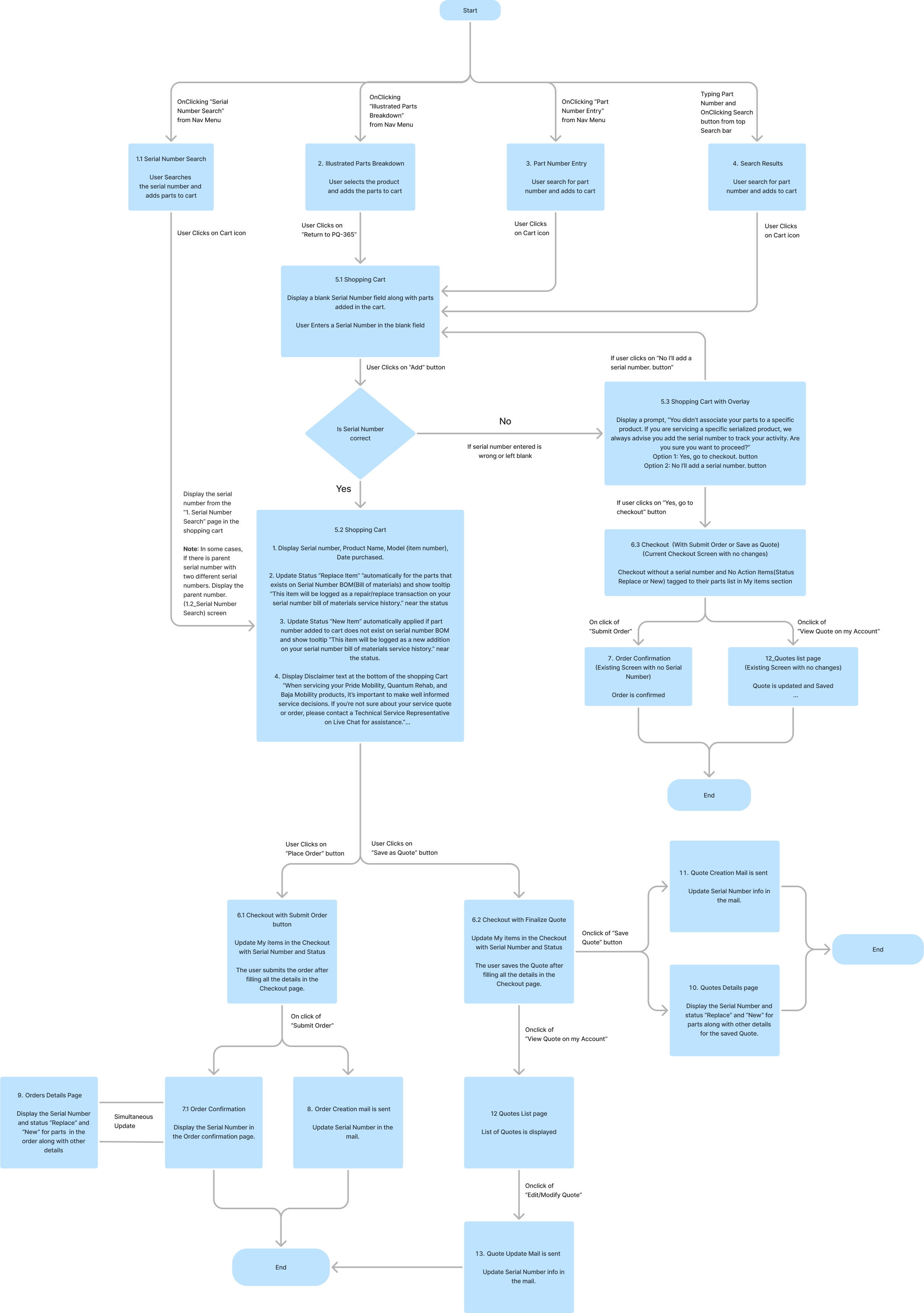
Wireframes-Visual Mockup
Design Feature 1: Locating product and parts serial numbers
Each mobility product, including power wheelchairs, mobility scooters, and lift recliners, has a parent serial number with associated child serial parts. Users can search for serial numbers either through the main search or via the Quote/Order Parts > Serial Number Search page.
A seat assembly may have a seat serial number and a base serial number, both linked to the parent serial number. Instead of searching for parts individually, users can enter any serial number, and the system will display a tree structure showing the parent-child relationships. This allows users to quickly add an entire seat assembly or select specific child parts for their order.
This structured search approach simplifies part identification, enhances efficiency, and provides a seamless experience for adding parts to the cart and proceeding to checkout.
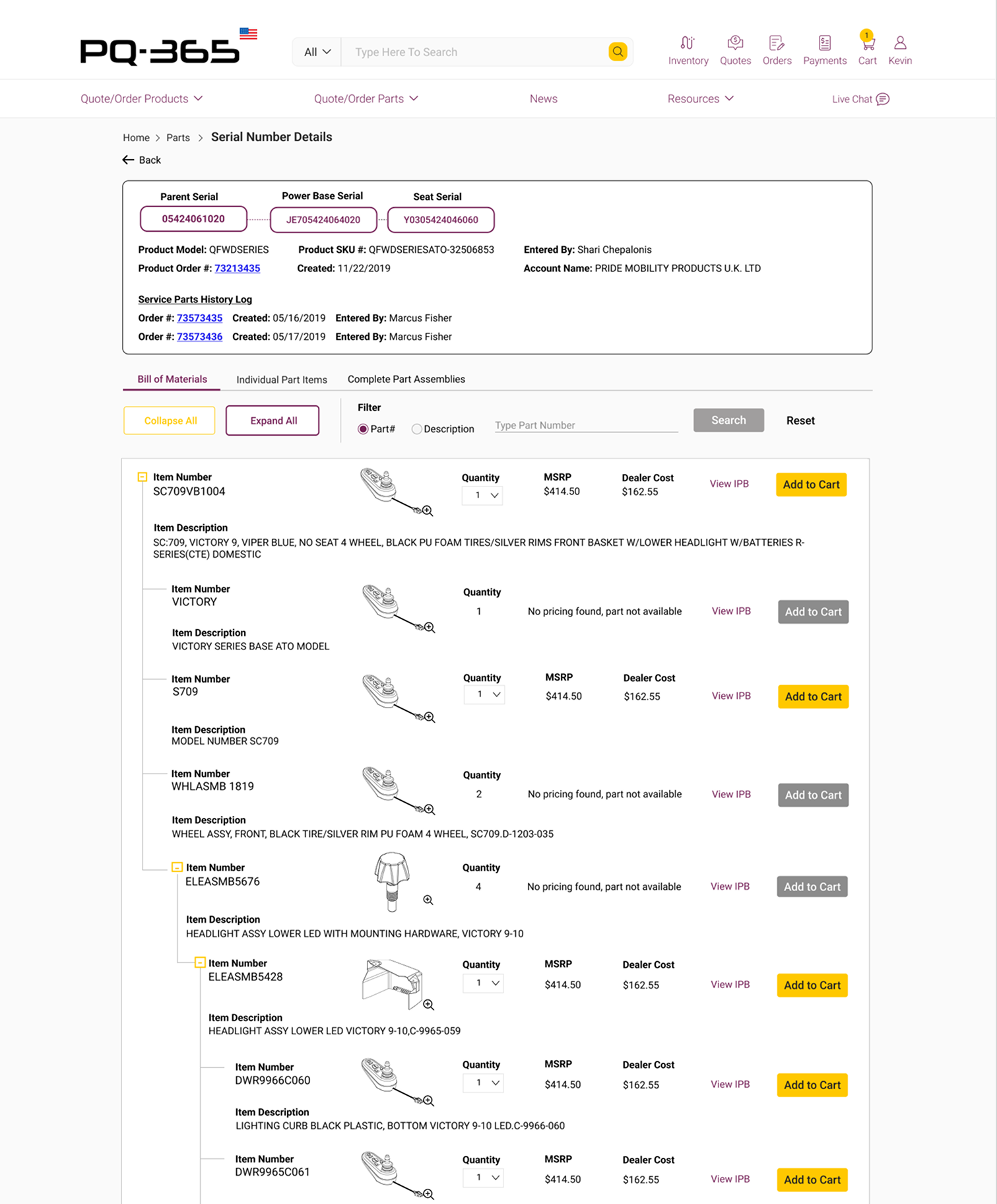
Design Feature 2: Intuitive Quote Builder & Streamlined Orders.
The redesigned Quote Builder was built as a modular, flexible workspace where users could add, edit, and validate parts in real time. Smart suggestions, inline validation, and editable quote rows helped reduce friction and minimize errors. Once finalized, quotes could be instantly converted into orders—eliminating the need for duplicate entry. This seamless flow between quoting and ordering significantly improved task efficiency and reduced dependency on manual workflows.
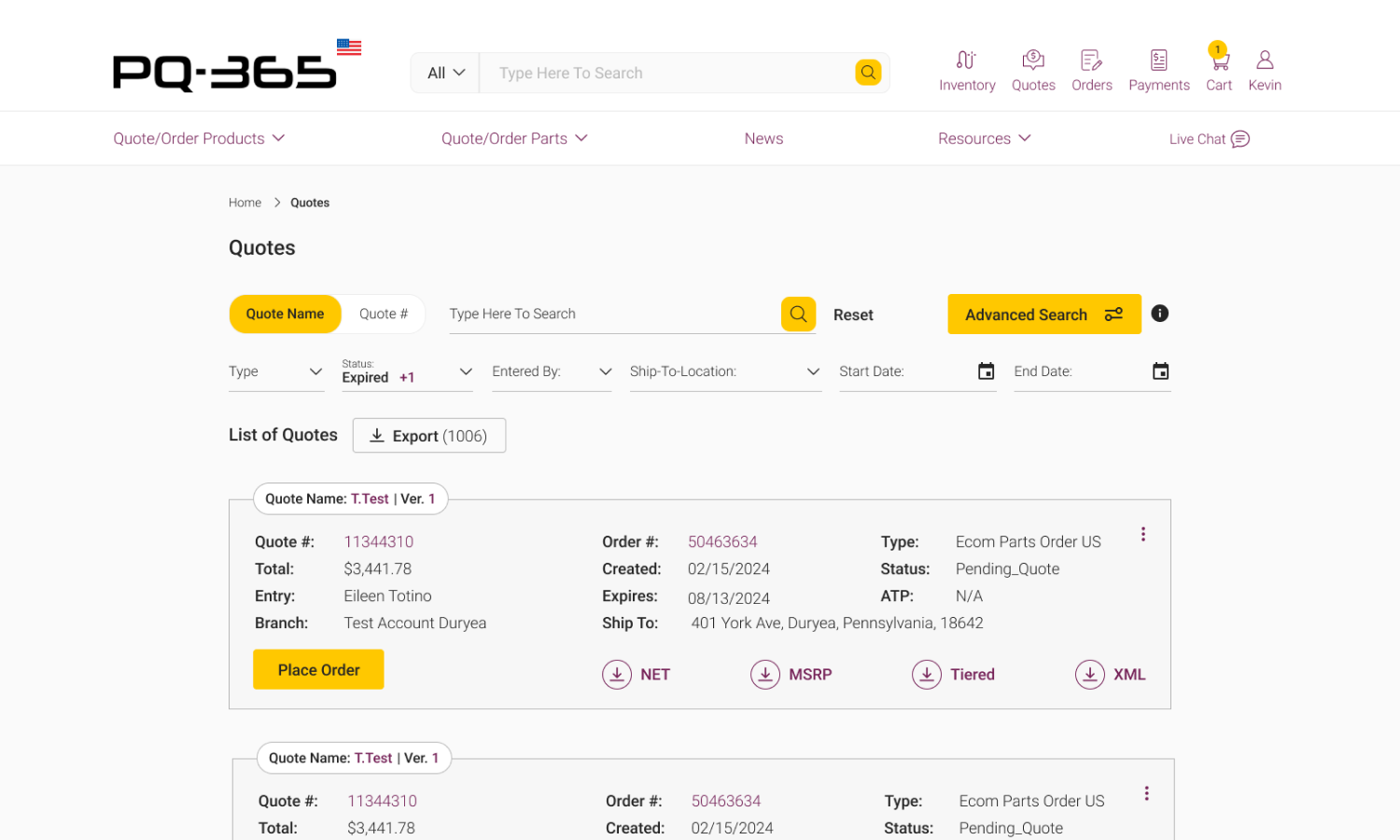
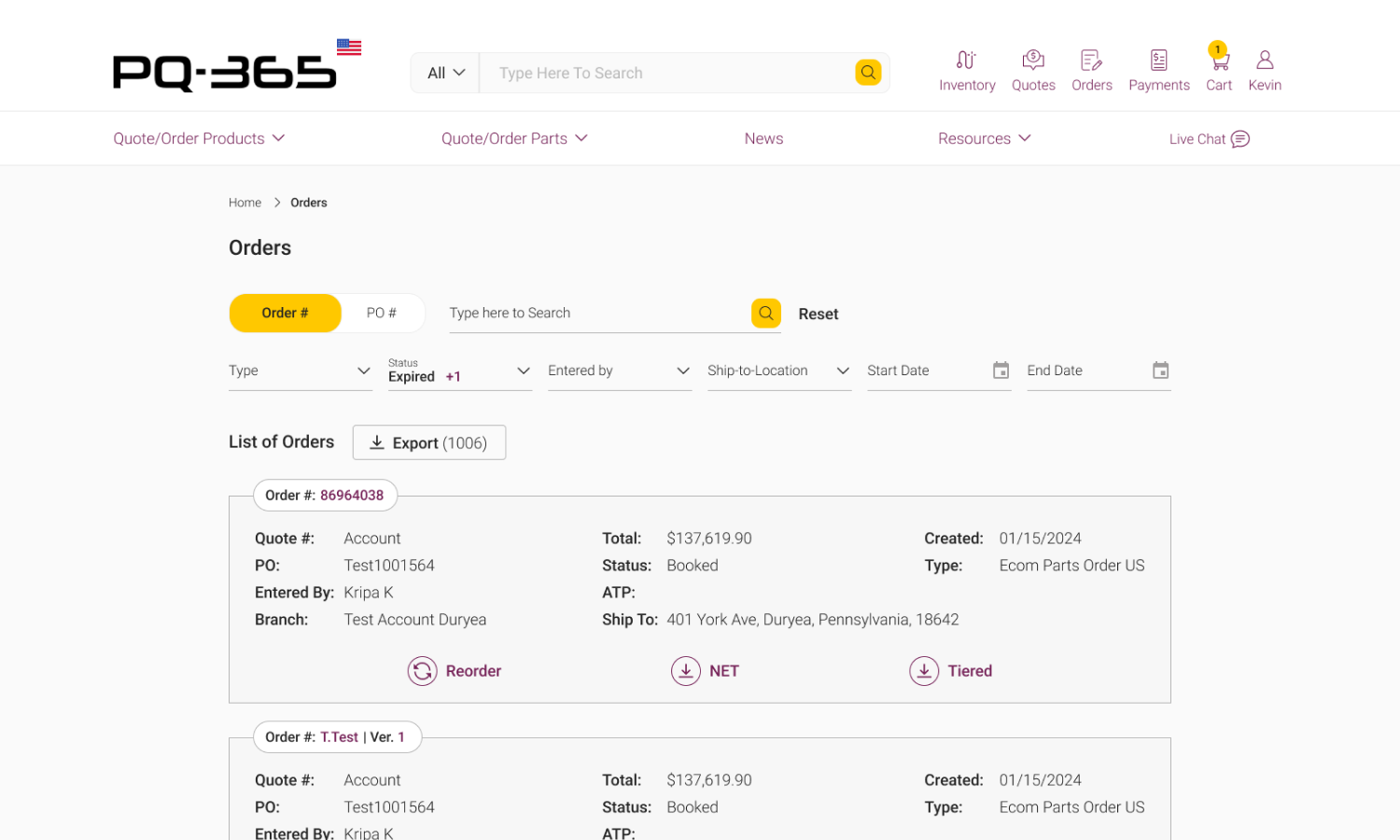
Design Feature 3: One-Page Checkout with Address, Delivery & Error-Free Flow
The redesigned one-page checkout consolidates order review, address or pickup location input, and delivery preferences into a single, easy-to-navigate screen. Users can quickly add or edit shipping/pickup details, choose delivery options, and complete payments—all in one place. Smart validations and inline error handling minimize mistakes, making the entire process faster, smoother, and more reliable.
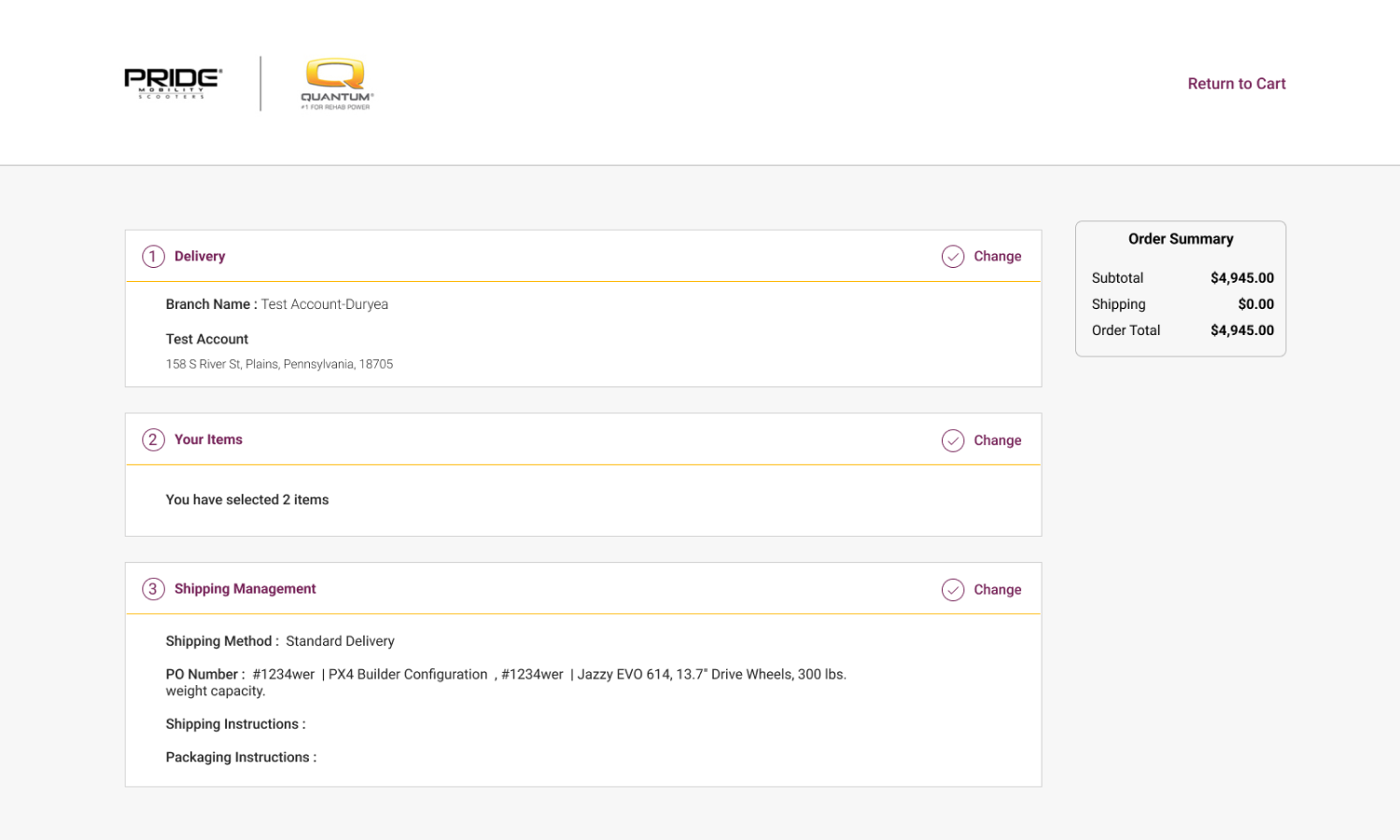
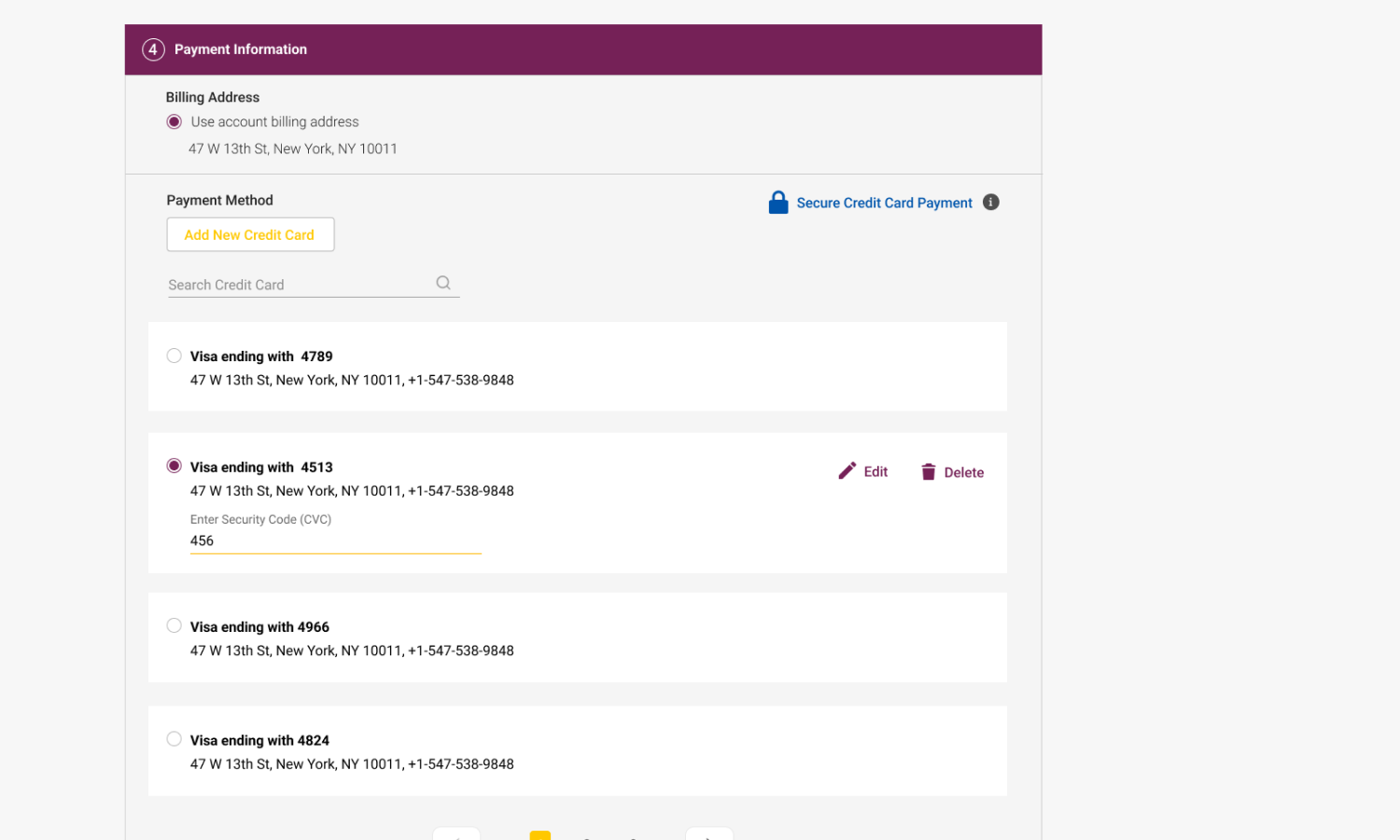
Design Feature 4: Enhanced Product Search & Filtering Experience
The product search interface was redesigned to improve discoverability and browsing efficiency. With intuitive filters on the left, keyword search at the top, and clearly structured product cards, users can now locate the right mobility models faster. Visual consistency, sale indicators, and smart categorization (like weight capacity and turning radius) empower providers to compare and choose products with ease—reducing time spent searching and improving task accuracy.

Design Feature 5: Serial Number and Part Validation Workflows
I introduced two dedicated workflows to simplify part selection: one where users can search using any serial number (parent, seat, or base) to view related parts in a tree structure, and another where users can directly input part numbers, validate them, and add them to the cart. These workflows ensure accuracy, reduce errors, and help users quickly identify and order the correct components, streamlining the entire parts management process.
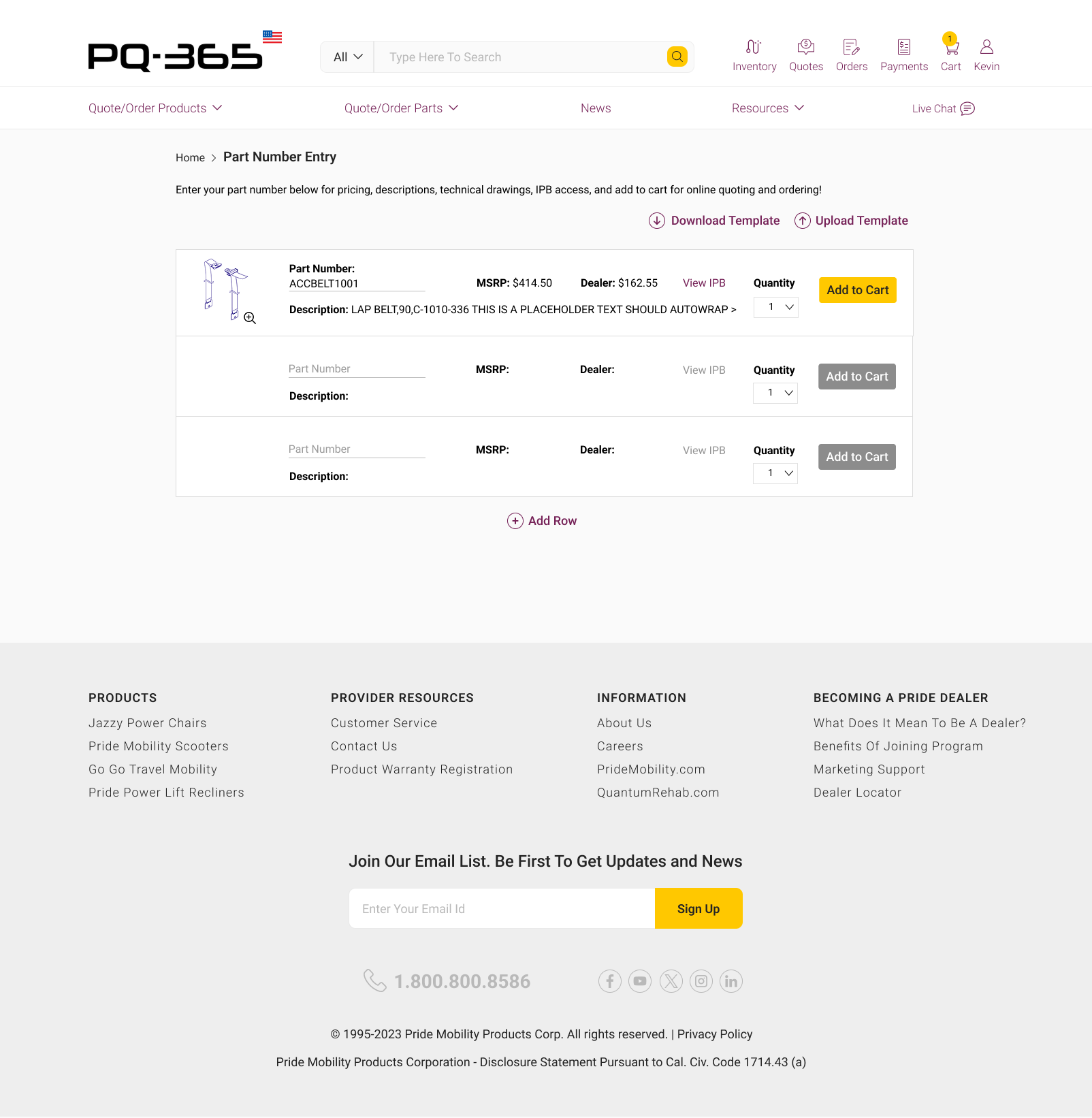
Components & Design System
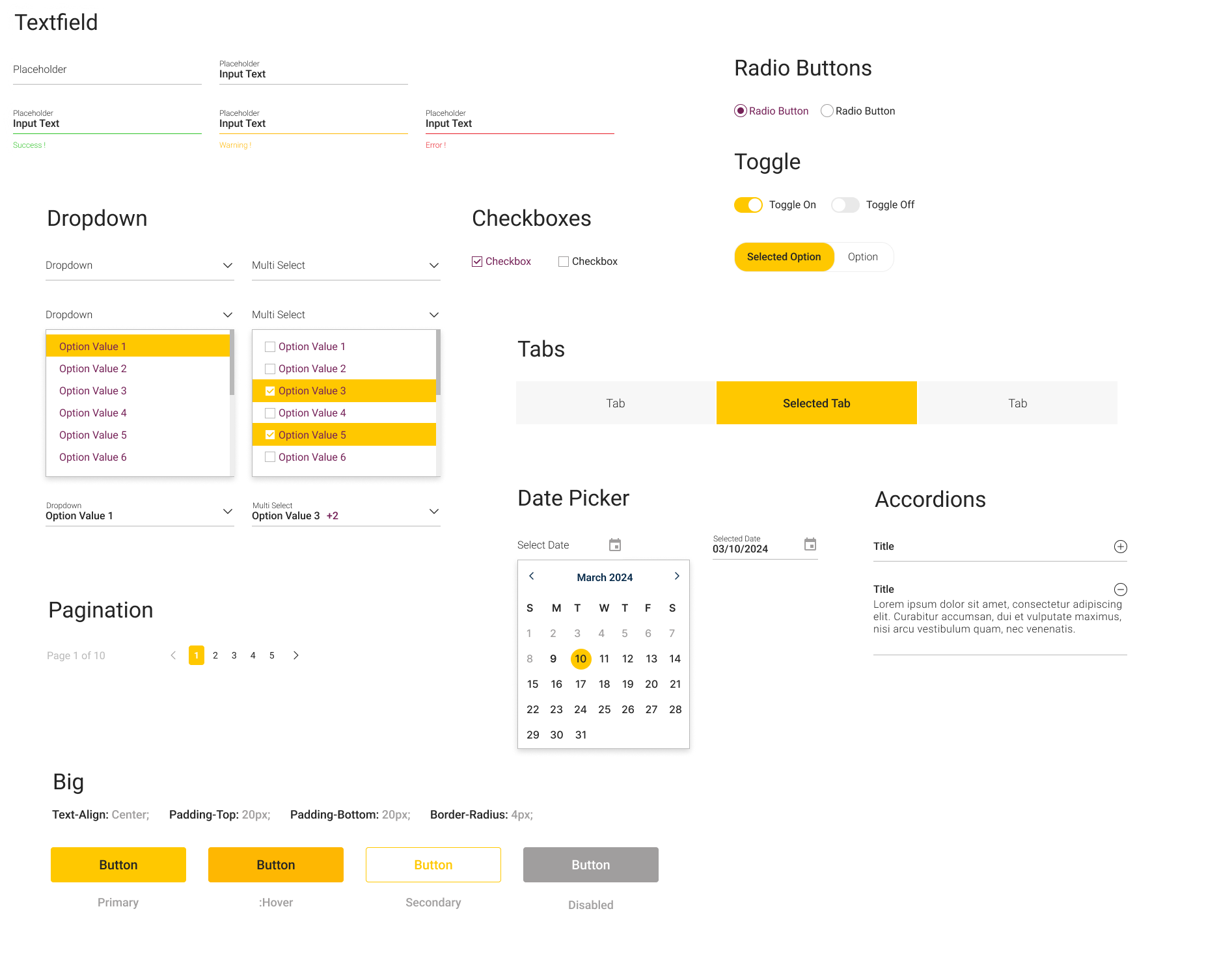
Interaction Design Highlights
- Inline Part Validation – Users could validate part numbers as they typed, reducing input errors early.
- Dynamic Quote Builder – Modular cards allowed users to add, remove, and edit parts without leaving the page.
- Progressive Disclosure – Checkout fields were grouped into collapsible steps to reduce visual overload.
- Live Error States – Invalid inputs (like wrong part numbers or empty fields) triggered contextual tooltips instantly or inline messages.
- Responsive Table Views – Large part tables collapsed into accordion-style sections on mobile devices for usability.
- Consistent Feedback – Buttons changed state (loading, success, disabled) to reinforce system response.
5. Implementation & Testing
I collaborated closely with developers to ensure the handoff from Figma to code was seamless. All designs were delivered with proper specs, interaction notes, and component guidelines.
Throughout development, I participated in weekly UI review sessions to fine-tune spacing, responsiveness, and alignment with UX goals. We identified areas where user feedback helped refine field validation, layout clarity, and step progression—especially within the Quote Builder and One-Page Checkout.
Internal QA was conducted using real tasks from Authorized Providers, and quick iterations were made based on usability friction, including minor interaction tweaks and copy updates.
Testing Methods
- Internal QA sessions
- UI consistency checks
- Developer collaboration & review
- Iterative improvements post-launch
6. Outcome & Impact
Results Achieved
- Reduced part search time significantly via tree-based lookup
- Increased quote creation speed with modular builder
- Reduced user frustration with one-page checkout
- Improved navigation and accessibility for key tasks
Client & User Feedback
"The new experience makes our job faster—we don’t have to second-guess part numbers or quotes anymore."
The redesign is now actively used across the U.S. and Canada and continues to receive updates based on live feedback from providers and retailers.
